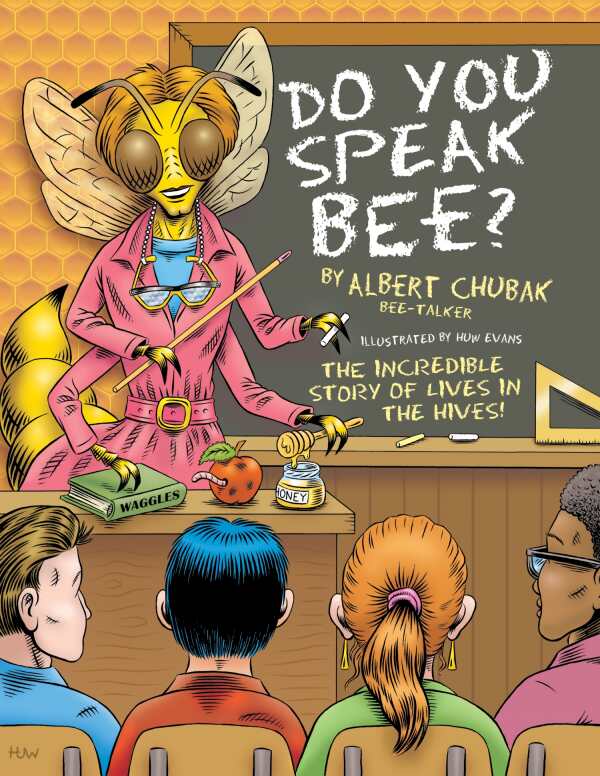Do You Speak Bee?
The Incredible Story of Lives Inside the Hives
An edifying introductory work of apiculture from a seasoned beekeeper, Do You Speak Bee? is fascinating as it peeks inside the inner workings of a colony.
Reflecting his deep fascination with beekeeping, which enabled the thorough observation of the structures inside a colony, Albert B. Chubak’s informative book Do You Speak Bee? demystifies the complicated world of the honey bee colony and the dozens of roles therein.
The first indication of how complex the topic is comes in the table of contents, which lists more than a hundred sections organized into eight main chapters, ranging from basic bee terminology to how bees behave outside of the colony, in the field. In addition to general information on colonies, there’s commentary on bees in history (and prehistory), in the Bible, and about their travels around the globe. This ranging work is complemented by colorful anthropomorphized illustrations of bees line dancing, taking out the trash, wielding swords, and feeding babies; their depictions of honey bees as a TSA agent (Security Bee), a fraternity boy (Drone Bee), and a lawn care worker (Blower Bee) are entertaining. Indeed, these keep the mood light through the book’s careful explanations and clear technical and scientific terms, many of which are multisyllabic and challenging.
There’s information on how bees communicate via odor and dance, on the “automated” systems that keep the colony healthy, and on the labor-intensive, nonstop repetitive work of caring for bee larvae. Bee products including honey, nectar, propolis, and bee bread are introduced. And the matriarchal societies of bee colonies are covered in depth, with the book vivifying the queen, her youthful attendants, the adult females, and the near superfluous males.
In the end, the book is effective as both a reference guide and a fun narrative text on bee life. It shows that each bee in the colony, no matter their role, both serves and relies on other bees. Repetition is one of its techniques, if perhaps a belabored one, constructing a complete picture of honey bee life in the manner of the compound eye forming a complete image of an object. Missing from this picture, though, are visual representations of a bee’s anatomy, the colony structure, bees’ social organization, and the bee’s life cycle.
A detailed but lighthearted apiary guide, Do You Speak Bee? shows how bees maintain their intricate systems and comments on the consequences of breakdown in the process, no matter how small.
Reviewed by
Paula Willey
Disclosure: This article is not an endorsement, but a review. The publisher of this book provided free copies of the book and paid a small fee to have their book reviewed by a professional reviewer. Foreword Reviews and Clarion Reviews make no guarantee that the publisher will receive a positive review. Foreword Magazine, Inc. is disclosing this in accordance with the Federal Trade Commission’s 16 CFR, Part 255.

